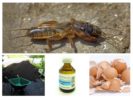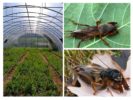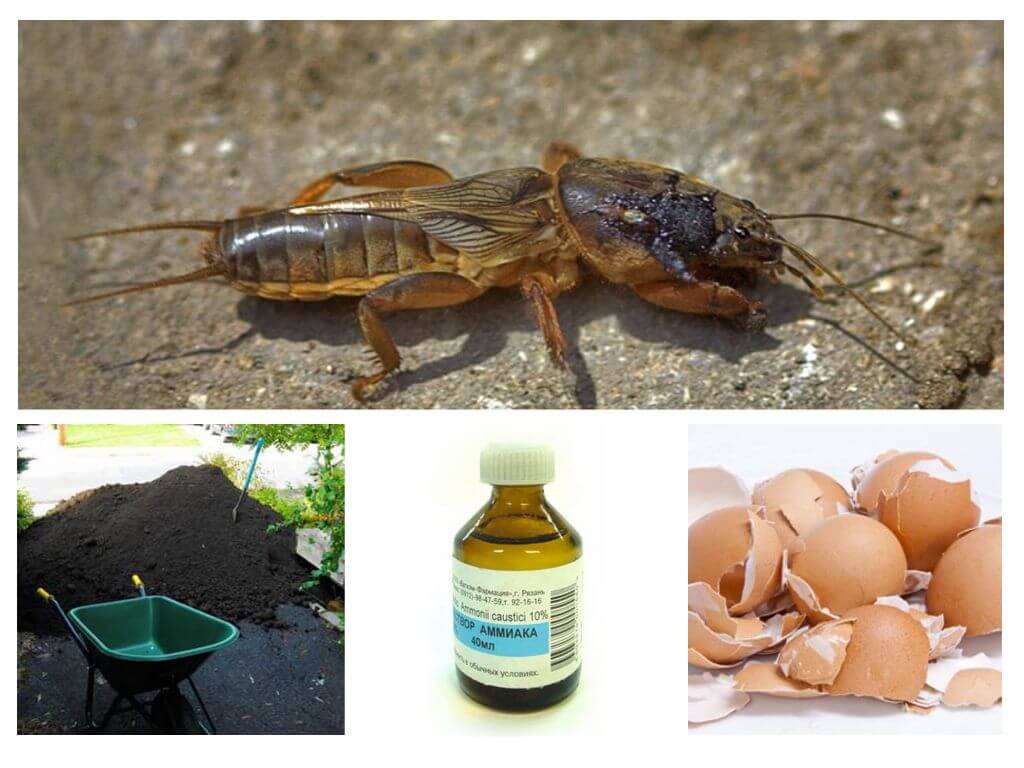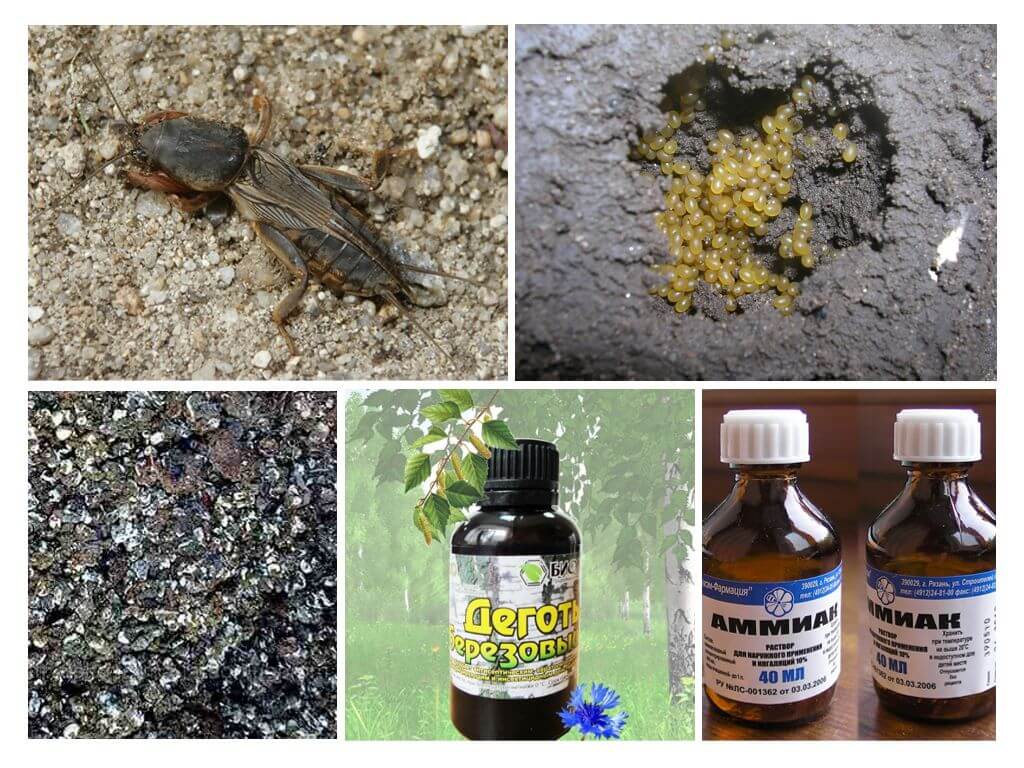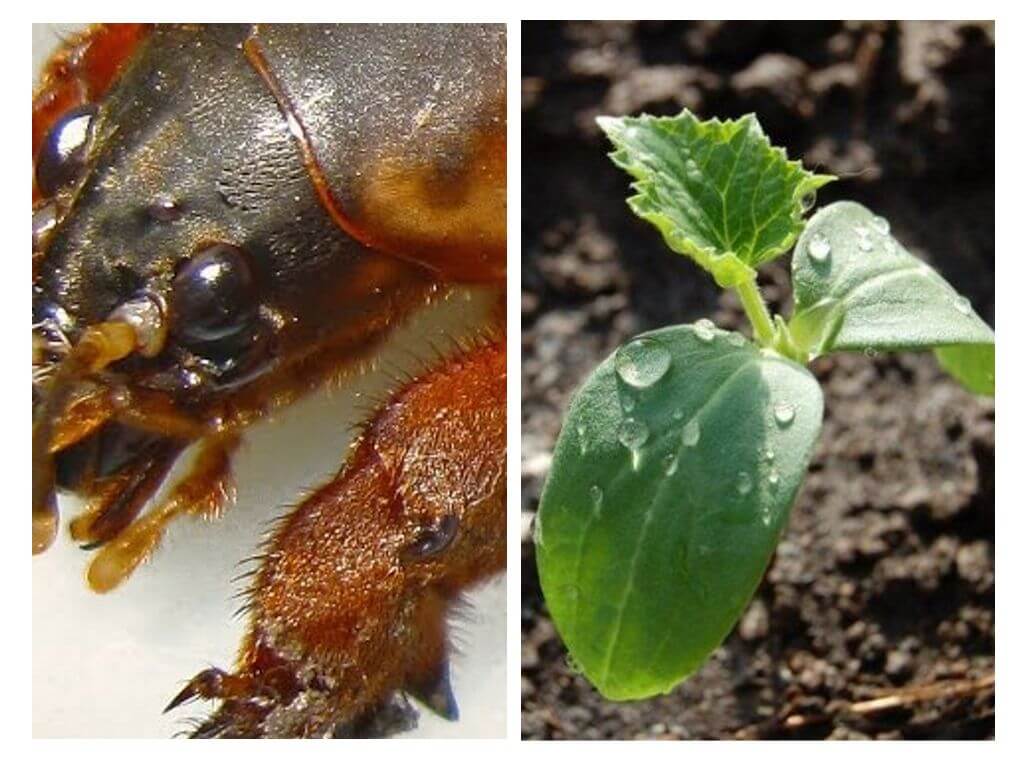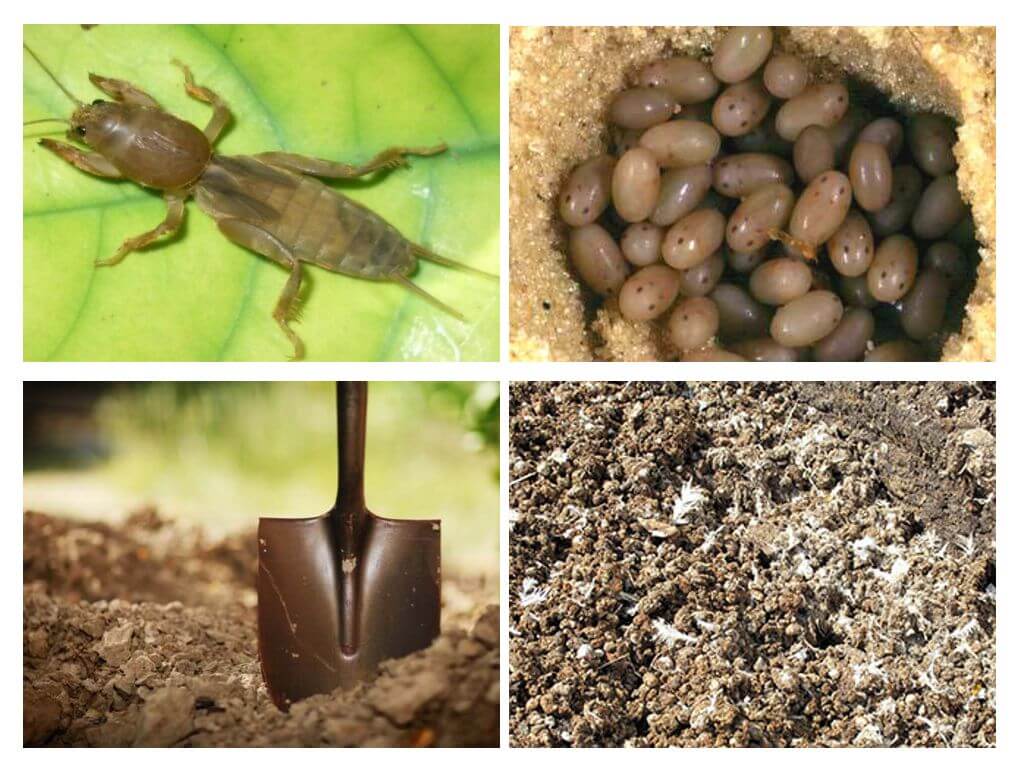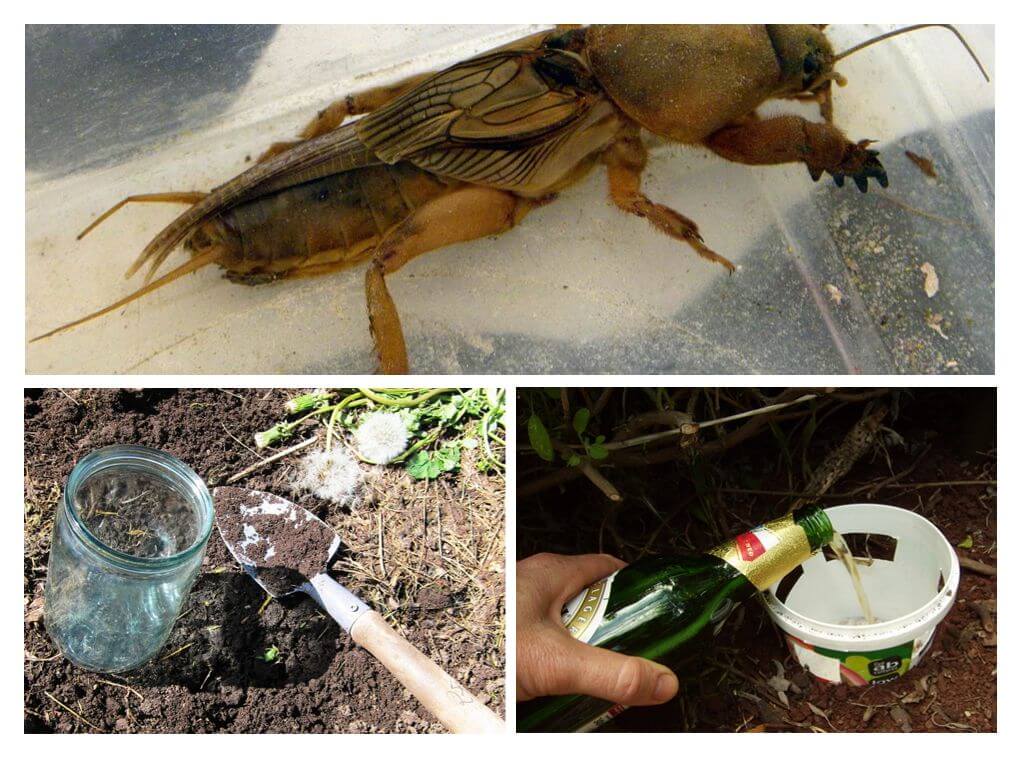- Methods for destroying the bear
- Bear in the greenhouse
Medvedka is an underground resident who loves warmth, humidity. In a greenhouse, such conditions are created much earlier and end later. Of the entire land, the insect will choose this one. How to deal with a bear in a greenhouse is a difficult question, because it depends on the design of the greenhouse, the period of operation, and the type of plants that are grown there.
Struggle at the construction stage
From the bear in the greenhouse, prevention helps well. It is necessary to create such conditions that the pest could not get inside, justify the nest.
According to some reports, the bear lives underground at a depth of 70 cm. It is scientifically proven that the insect goes 2 meters deep before the onset of persistent cold, and remains to winter. With the onset of heat, it approaches closer to the surface. Builds its nests in well-warmed soil. On average, this is a depth of about 50 cm. Gardeners found nests at such a distance from the ground.
The bear feeds on plant roots, gnaws juicy stems, root crops, earthworms, small insects. At a depth of more than 50 cm there is practically no food for the pest, it makes no sense to penetrate the earth to such an extent.
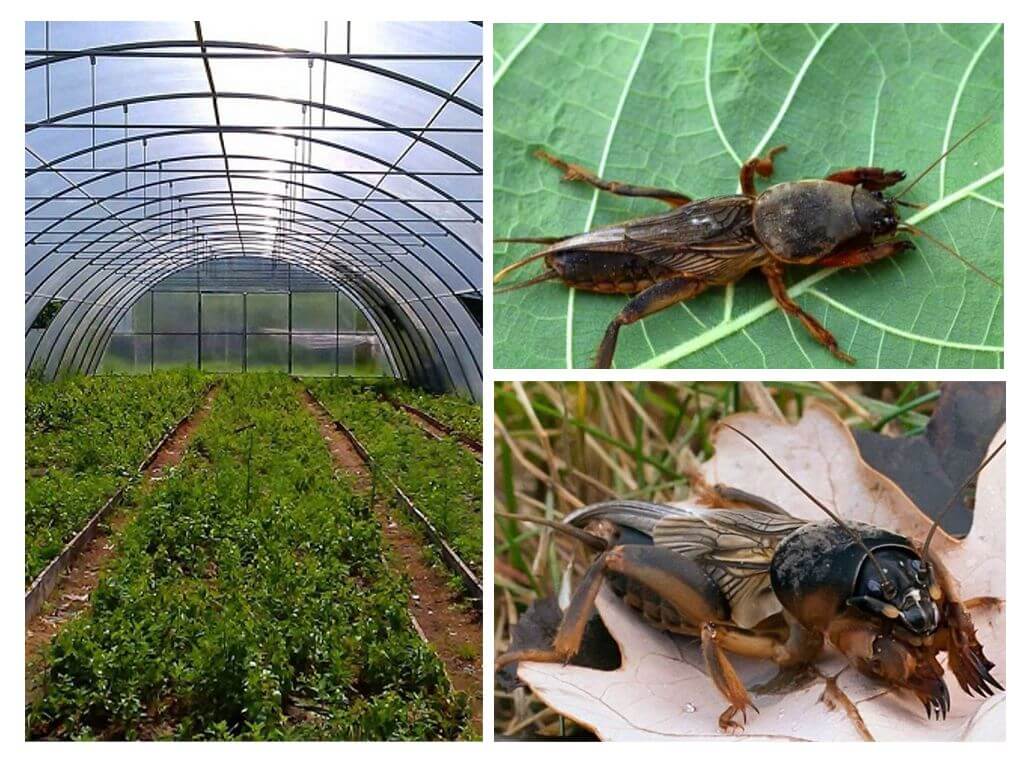
The female builds a nest, lays eggs in it, creates, maintains favorable conditions - 4 exits from different sides for free air circulation, heat penetration, gnaws plant stems to avoid shading of the dwelling. All this happens at a depth of about 20 cm.
On a note!
The fight with the bear in the greenhouse is to deepen its structure on all sides by 50 cm in depth. Used slate, metal sheets, other material not amenable to decay. If the door remains open at night, hang a grid with small cells.
Destruction methods
Use insecticidal poisonous agents in the greenhouse (Wofactox, Rembek etc.) is inexpedient, hazardous to health, a struggle is being waged by folk remedies.
Soil change
There are many real methods like remove the pest from the garden. The easiest, fastest, but time-consuming way is to change the soil. Take out the entire fertile layer, place a new bear, not infected with eggs. Or pour the earth in the fall on plastic wrap in the autumn, leave it to winter. Low temperatures will kill pest eggs.
Ammonia
Tomato, eggplant seedlings watered with a solution ammonia. Dilute 10 ml in a bucket of water. Shallow furrows are dug around the plant so that ammonia does not get to the roots of the culture, the green part. Watered at a distance of 10 cm from the plant. Such a control method is not suitable in a greenhouse where cucumbers are grown. These plants do not tolerate ammonia.
Plastic bottle
What to do if the bear has lived in the greenhouse for several years, it is impossible to get rid of it, it is also known. Each plant - tomato, cucumber, eggplant is planted in a cylinder from a plastic bottle without a bottom. Diameter 20 cm, depth 30 cm. Tomatoes can be removed when the ovary appears on the plant. The plant has grown stronger, able to withstand the attack of the bear. Cucumbers, eggplant will have to be left in the cylinder.
Eggshell
You can drive the bear out of the greenhouse egg shell. It should be crushed, sprinkled in a hole before transplanting seedlings. A pest stops digging a stroke if it comes across something sharp. The shell can be sprinkled on top around the plant, slightly sprinkled with earth.
Bottle trap
Physical methods of control can significantly reduce the population of insects. They dig the bottles into the ground at an angle. Pour beer or just plain water. Bears are drawn to moisture, they will climb into a trap with liquid. They are also attracted by the strong beer aroma. Species traps there are many.
Smell
When planting plants in the holes, you should throw a clove of garlic, walnut leaves, coriander. These components retain their smell for a long time, scare away the bear, and other harmful insects.
Flowers
You can get rid of a bear in a polycarbonate greenhouse with flowers - marigolds, chrysanthemums. They are planted around the greenhouse. Plants expel pests from the greenhouse, do not allow to settle.
Kerosene
You can bring a bear to kerosene. Around the greenhouse, grooves are dug with a depth of about 30 cm. They are filled with sand filled with kerosene.
Chicken droppings
Greenhouse plants require top dressing, give a good harvest only on fertile soil. In most cases, saturate the earth with the necessary components using manure. However, with this fertilizer, you can bring your own bear eggs into the greenhouse. Since insects often winter under a pile of manure, they build nests. One way out is to use bird feces. They fertilize the soil several times better than cow, pork, and other domestic animals. Chicken droppings repels the smell of pests, makes the greenhouse soil unattractive for them.
Poison from cereals and legumes
Destroy the bear can be a poisonous bait. Use an effective insecticidal agent or another poisonwith which poison the Colorado potato beetle. Boil porridge from rice, barley, millet, boiled peas. Pour a solution of a toxic drug, mix well. For the smell add a few tablespoons of vegetable oil. Dig small holes, moisturize, lay out the bait.
In addition to these, there are many more funds from the bear in the garden that can be used in the greenhouse.
It is possible to take the bear out of the greenhouse and protect the plants from death in different ways, but it is better to prevent the penetration of pests inside. Before the construction of the greenhouse, it is worthwhile to carry out preparatory work, to provide reliable protection.
